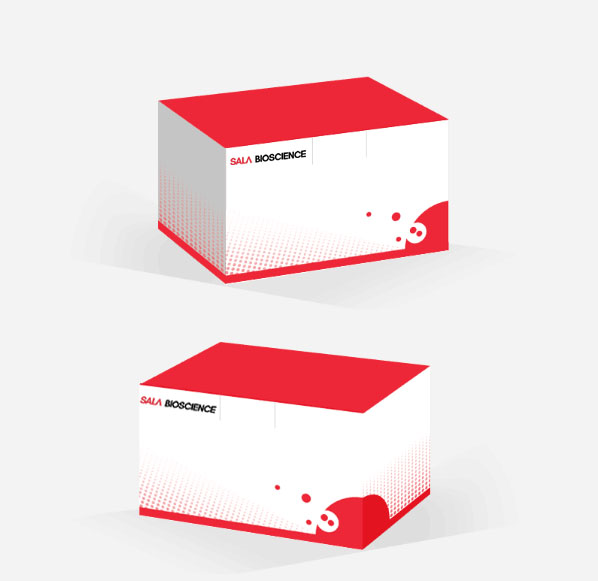Soil Nitrate Nitrogen Content Assay Kit/SLBC0040
- Price:Negotiable
Product Detail
Soil Nitrate Nitrogen Content Assay Kit
Note: Take two or three different samples for prediction before test.
Operation Equipment: Spectrophotometer
Cat No: SLBC0040
Size: 50T/48S
Components:
Reagent I: Powder×2, store at 4℃ and protect from light. Add 2 mL of concentrated H2SO4 before use, fully dissolve it.
Reagent II: 100 mL×1, store at 4℃.
Standard: Powder×1, store at 4℃. 10 mg of potassium nitrate. Dissolve it with 1.386 mL of distilled water to form a NO3--N standard solution of 1000 μg/mL.
Product Description:
Nitrate nitrogen is the nitrogen element contained in nitrate. Nitrate nitrogen in soil is one of the main forms of nitrogen absorption by higher plants, and its content is directly related to the yield and quality of crops.
Under the condition of concentrated acid, NO3- reacts with salicylic acid to form nitrosalicylic acid, which is yellow under the condition of alkaline (pH>12), and its color depth is directly proportional to the content, so the content of nitrate nitrogen can be calculated.
Reagents and Equipment Required but Not Provided:
Spectrophotometer, table centrifuge, water-bath, 1 mL glass cuvette, transferpettor, oscillator and distilled water, concentrated H2SO4.
Procedure
I. Sample preparation:
Add distilled water according to the ratio of soil mass(g): the volume of distilled water(mL)=1:5~10 (it is recommended to weigh about 0.1 g of soil sample, add 1 mL of distilled water), shake it in the shaker for 1 hour. Centrifuge it at 10000 ×g for 10 minutes 25℃, and take the supernatant for test.
II. Determination procedure:
1. Preheat spectrophotometer for 30 minutes, adjust wavelength to 410 nm, set zero with distilled water.
2. Dilute the 1000 μg/mL NO3--N standard solution 40 times with distilled water to 25 μg/mL standard solution.
3. Operation table:
Reagent name (μL) | Test tube (T) | Standard tuba (S) | Blank tube (B) |
Sample | 40 | - | - |
Standard solution | - | 40 | - |
Distilled water | - | - | 40 |
Reagent I | 60 | 60 | 60 |
Mix well and let stand at 25℃ for 30 minutes. | |||
Reagent II | 1400 | 1400 | 1400 |
Mix well, vortex and shake to make the precipitate fully dissolved. Take 1 mL of the reaction solution to 1 mL glass cuvette, and measure the absorbance at 410 nm, calculate the ΔA =AT-AB, and the ΔAS = AS-AB. | |||
III. Calculation
NO3--N (μg/g Soil)= ΔA÷(ΔAS÷CS)×VE÷W=25×ΔA÷ΔAS÷W
W: Sample mass, g;
CS: Concentration of standard solution, 25 μg/mL;
VE: Volume of extract solution, 1 mL.
Note:
1. Soil colloid does not adsorb nitrate ion, and it is soluble in water and moves inside the soil. Therefore, the same sampling depth should be kept for multiple samples or repeated samples.
2. It is suggested that fresh soil should be used to determine the content of nitrate nitrogen. The samples should be sealed, transported and stored at 4℃, and analyzed within 3 days. Otherwise, it should be stored in small pieces at -20℃ (deep freezing), and the nitrate nitrogen in the sample can be stored for several weeks. The temperature and time of thawing should be controlled when measuring the nitrate nitrogen content of deep freezing. When thawing at room temperature, the sample should be thawed, homogenized and extracted within 4 h; if thawing at 4℃, the thawing time should not exceed 48 h.
3. If we want to compare the content of nitrate nitrogen between different samples, we need to dry the soil samples and calculate them according to the dry weight.
4. The Reagent Ⅰ can be used as soon as possible after preparation, and can be stored at 4℃ for one week.
5. Both Reagent Ⅰ and Reagent Ⅱ are highly corrosive, so protective measures should be taken during operation.
6. If the absorbance value is greater than 1.5, it is recommended to dilute the sample with distilled water before determination.
Experimental examples:
1. 0.1 g of soil sample is added with 1 mL of distilled water for shaking extraction for 1 h. After centrifugation, the supernatant is extracted according to the determination steps. The calculated results is as follows: ΔA =AT- AB = 0.192-0.005 = 0.187, Δ AS = 0.580-0.005 = 0.575
NO3-- N content (μg/g soil sample) = 25 × ΔA ÷ ΔAS ÷ W = 25 × 0.187 ÷ 0.575 ÷ 0.1 = 81.3 μg/g soil sample.
2. 0.1 g of forest soil is added with 1 mL of distilled water for shaking extraction for 1 h. After centrifugation, the supernatant is extracted and operated according to the determination steps. ΔA = AT - AB = 0.146-0.005 = 0.141, Δ AS = 0.580-0.005 = 0.575
NO3-- N content (μg/g soil sample) = 25 × ΔA ÷ Δ AS ÷ W = 25 × 0.141 ÷ 0.575 ÷ 0.1 = 61.3 μg/g soil sample.
References:
[1] Vendrell P F, Zupancic J. Determination of soil nitrate by transnitration of salicylic acid[J]. Communications in Soil Science and Plant Analysis, 1990, 21(13-16): 1705-1713.
[2] Cataldo D A, Maroon M, Schrader L E, et al. Rapid colorimetric determination of nitrate in plant tissue by nitration of salicylic acid[J]. Communications in soil science and plant analysis, 1975, 6(1): 71-80.
Related products:
BC2890/BC2895 Total Phosphorus/Organic Phosphorus And Inorganic Phosphorus In Soil Assay Kit
BC3020/BC3025 Soil Available Boron Assay Kit
Technical Specifications:
Minimum Detection Limit:0.0495 mg/mL
Linear Range:0.1953125-80 mg/mL
